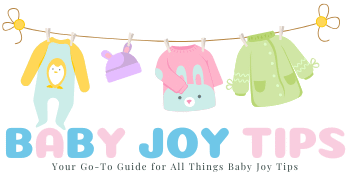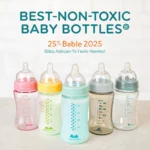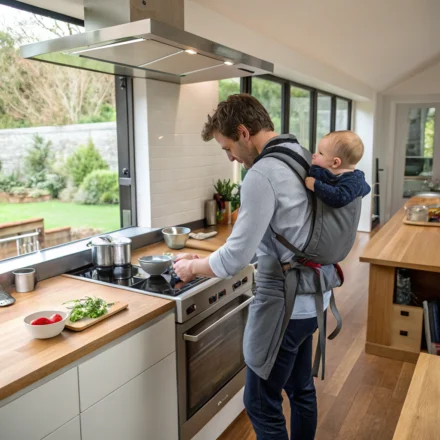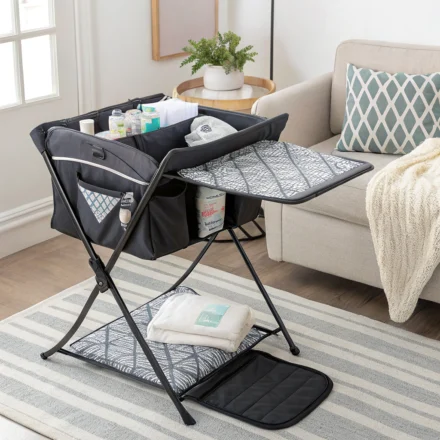Few things are more stressful than watching your hungry baby scream or turn away when offered a bottle. Whether you’re transitioning from breastfeeding, returning to work, or simply trying to share the feeding load, bottle refusal can leave you frustrated and worried.
If your baby is refusing the bottle, you’re not alone—and it’s not your fault. The good news? With the right strategies, most babies can and do learn to accept the bottle again.
In this post, we’ll share 5 expert-backed, parent-tested tricks for bottle feeding that actually work. You’ll also get insights into why babies refuse the bottle, when to seek help, and how to stay calm through it all.
Why do infants reject the bottle?
Bottle rejection is a typical and usually temporary state. Common reasons for bottle rejection include :
- Nipple confusion/preference with babies (especially if breastfed)
- The discomfort or fear of teething or oral discomfort
- Pain or discomfort with growth spurts, or milestones
- Issues related to the location of feeding or the flow from the bottle
- Emotion or changes in caregiver (new caregiver, separation anxiety, etc.).
By understanding the why of your baby’s needs will help you adjust your approach to feeding your baby to meet the individualized needs of your baby.

5 Tricks to Get Your Baby Drinking Again
These baby feeding solutions have helped thousands of parents turn bottle refusal into relaxed, consistent feeding.
1. Change the Feeding Environment
Sometimes, your baby associates certain spaces or routines with breastfeeding—or with past stressful feeding sessions.
Try this:
- Offer the bottle in a different room, while walking, or even outside
- Use motion (swaying, bouncing, rocking) during the feed
- Dim the lights, play white noise, or create a calming atmosphere
This resets the experience and can reduce resistance.
2. Let Someone Else Offer the Bottle
If your baby smells or hears you nearby, they may hold out for the breast—even if they’re hungry.
Trick:
- Have a partner, grandparent, or trusted caregiver offer the bottle
- Leave the room or the house to break the association
- Be patient—sometimes it takes 2–3 days of consistent effort
This is one of the most effective feeding strategies for infants transitioning from breast to bottle.
3. Try Different Types of Nipples and Flows
The nipple type and flow rate can literally make or break bottle acceptance.
Adjust according to what you observe :
- If baby chokes or pulls away : flow is probably too fast.
- If baby gets frustrated or loses interest : flow is probably too slow.
- If the baby is breastfed, consider trying a wide-base nipple (Comotomo, MAM).
- Try nipple warmers or dip the nipple in breastmilk for familiarity.
By finding the right combination, you may significantly improve bottle acceptance.
4. Offer When Baby Is Calm – Not Hungry
Many parents wait to offer the bottle until baby is “good and hungry”. But an overtired, hungry baby will likely not cooperate.
Instead :
- Try offering the bottle when baby is drowsy but not asleep
- Offer during dream feeds (before full wake)
- Start with small amounts to lessen pressure
This decreases the pressure on you and the baby while making bottle time feel more like cuddling, not battling.
5. Try a Bottle “Bridge” Using Breastmilk
If you are breastfeeding, bottle refusal may be a reaction to taste or comfort and you can use your breastmilk as a bridge.
Tips:
- Use freshly pumped breastmilk, not frozen (some babies can taste the lipase difference)
- Use paced bottle feeding to mimic the flow of breastfeeding
- Gently rub the nipple on baby’s upper lip to activate their rooting reflex
- Hold baby closely against you to create skin to skin contact and that similar bond in breastfeeding
Creating that secure bond in skin to skin will help encourage baby to drink from the bottle without confusion.

What Not to do If Your Baby is Refusing the Bottle
Avoid these common mistakes that could be making things worse for you !
🚫 Don’t force the nipple into your baby’s mouth
🚫 Don’t try new bottles every day—This can be overwhelming for your baby.
🚫 Don’t skip feeds because you are frustrated.
🚫 Don’t make mealtimes stressful—Babies can pick up on tension.
Instead, continue to be consistent with your baby, and stay calm. Like any skill, learning to bottle feed takes babies time, and most babies are able to figure it out in the end.
Baby Refusing a Bottle : Should I Call My Pediatrician?
Most situations resolve on their own, but if your baby is regularly missing feeds, or losing weight, talk to your pediatrician if:
- Your baby won’t take a bottle and is paired with vomiting, rash or other symptoms.
- Your baby hasn’t had a bottle in over 24 hours.
- You have reason to suspect your baby is in some type of pain (such as teething, ear infection, tongue tie).
Medical or anatomical problems can interfere with your baby’s ability to take a bottle– and with early intervention it can help !
Conclusion
A baby refusing bottle is one of the most frustrating challenges in early parenthood—but you’re not alone, and there are proven ways to get back on track. Whether it takes a change of scenery, a different nipple, or a bit of time and patience, most babies do return to bottle feeding with the right support.
With these baby joy tips, you can reduce stress, rebuild trust, and turn feeding time back into a bonding moment.
Frequently Asked Questions
Why is my baby suddenly refusing the bottle?
This may be related to developmental changes, teething, illness, or preference for mam. Typically, this is a temporary issue and will improve with time and patience.
How long can a baby go without eating?
Healthy babies will generally eat every 2–4 hours. If your would-not-eat baby did not eat within a 6+ hour period and is refusing, you should contact your pediatrician.
Can a breast-fed baby revert back to a bottle?
Yes, if you consistently try to calmly get your baby to eat from a bottle and sometimes with a new caregiver, many babies will return to bottle-fed babies.
What bottle to try if baby refuses the bottle?
Try a bottle with slow-flow, mimicking the breast-like nipple; Comotomo, MAM, Lansinoh, or Dr. Brown’s wide neck.
Should I wait until baby is hungry to offer the bottle?
Not always. Offering the bottle when baby is calm, sleepy, or in a playful mood may lead to better acceptance.








Leave a Comment